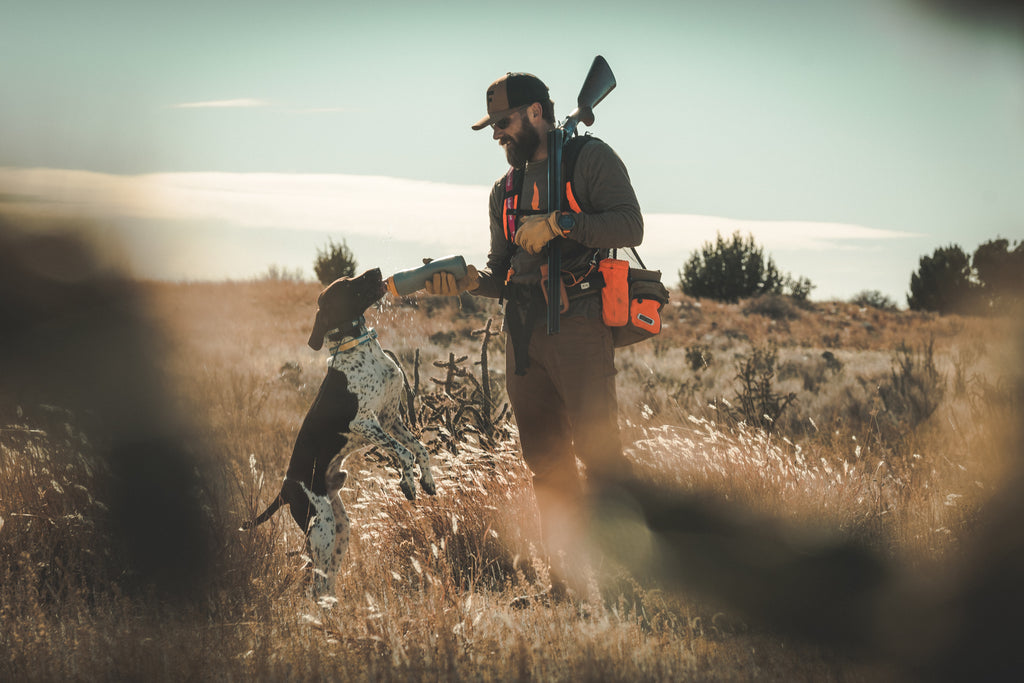Shoot Better – Pay Attention to Your Dog

If no feathers fly after a tail-stiffening point, you’ve disappointed your dog to no end. A shotgun that fits, functions, and pleases us aesthetically is worthless unless we achieve success when we pull the trigger. With the start of most hunting seasons, I thought we should talk about how our shooting success is largely a result of how we relate to our dog.
Thinking like a dog can help our shooting whether we carry a rusty old pump gun or a sleek Italian work of art. Sure, give your shotgun TLC all season … cleaning, lubricating, storing dry and practicing your shooting. But the most important item in your arsenal doesn’t have a trigger or barrel (okay, he does have a muzzle!). Pay attention to your dog, and you’ll be putting the odds in your favor instead of the bird’s.

In South Dakota, a companion got so nervous (or was he dazzled at my dog’s performance?) the bird had ample opportunity to fly wild or scoot out from under my dog's point. This guy snuck, skulked, minced and tiptoed over 100 yards - it seemed to take eons for him to flush the dang bird! The rest of us were going batty, urging him to step on it; I was hoarse from yelling across the stubble. Luckily the bird held and the outcome was fatal for him. Here’s the lesson:
First, ensure a solid point and a bird that holds still rather than a scampering off unscathed. Start by being punctual. Once your dog stands the bird, walk in with alacrity. The longer you dawdle, or admire his stunning good looks, or take photos, the greater the chance a bird will flush wild, run off or the dog will do the flushing for you.
Then, assert yourself. Over many years in many fields one thing is clear: both birds and dogs hold better when the gunner moves with confidence. Once your dog shows you the bird, stride right in and everyone will likely do what’s expected of them. This is the time to show you are in charge. Be confident.
Choose your route with care. When approaching the birds, swing wide around the dog and you’ll cut off one of the bird’s escape routes. Two gunners performing a pincer movement means even fewer bolt-holes for a cunning rooster more inclined sprint than fly. If you can put the bird between you and the dog there’s a good chance it will fly, not run.

Flanking your dog also minimizes his chance of his breaking point. “Allelomimetic behavior” is a highfalutin’ word for that flock of birds that jinks in unison, or pair of wolves on the hunt, trotting in parallel. Sauntering close alongside a pointing dog is an invitation to follow you into the flush – that’s how we teach “heel,” after all.
Okay, so the dog is staunch, muscles quivering and eyes bulging. He’s done his part and so far you haven’t bollixed things with your approach. The bird is still somewhere under that bush, right? Now let’s do our darndest to hit it when we pull the trigger.
The good clay target shooters anticipate a bird’s trajectory and set their feet for it. I’m no slouch when it comes to stealing great ideas, and neither are you, right? With a little knowledge and experience, you can probably make an educated guess as to which direction that rooster will launch itself. Simply knowing that will help your approach, and ultimately, how you set your feet for the shot.
As you flush your quarry, anchor your “off” foot (left if you shoot right-handed) pointing about the direction you hope the bird will fly. If you’re flushing the bird yourself save that last step and make it in the direction you anticipate the bird flying.
Your other foot should be nicely squared off for balance (not too far behind your left foot), with both feet about shoulder-width apart. This stance provides the maximum arc when you swivel your hips – quite helpful on fast-moving bobwhites, for example.
Are you ready to flush the bird? Almost.
Written by Scott Linden
